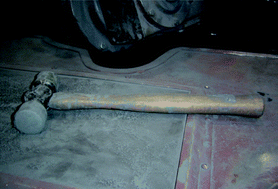Dissolution of the metal sensitizers Ni, Be, Cr in artificial sweat to improve estimates of dermal bioaccessibility
Abstract
Dermal exposure to sensitizing metals is a serious occupational and public health problem. The usual approach to dermal exposure assessment is to process samples by chemical methods that use reactants to digest the metal particles and quantify the mass. In the case of dermal exposure assessment, these reactants are not representative of the skin surface film liquids and hence, may overestimate bioaccessibility. We hypothesize that the amount and form of sensitizer on a sample that leaches in a biological fluid, as can be estimated using artificial sweat, may be a more relevant metric for assessing health risks. Beryllium metal (Be), nickel metal (Ni), and chromium carbide (Cr3C2) particles were characterized and masses of sensitizing ions were measured using established reactant-assisted digestion procedures and extraction in artificial sweat under physiologically relevant conditions. Chromium ions released into artificial sweat were speciated to understand valence states. The ratios of the fraction of metal dissolved in artificial sweat relative to that dissolved by chemical-specific reactants were 1/2 (Be), 1/108 (Ni), and 1/2500 (Cr). The divalent Be and Ni cations were stable in artificial sweat over time (did not precipitate) whereas hexavalent chromium [Cr(VI)] ions decayed over time. Further analysis using speciated isotope dilution mass spectrometry revealed that the decay of Cr(VI) was accompanied by the formation of Cr(III) in the sweat model. Use of reactant-assisted analytical chemistry to quantify amounts of metal sensitizers on samples could overestimate biologically relevant exposure. In addition to mass, the valence state also influences penetration through the outer stratum corneum of the skin and is an important consideration when assessing exposure to complex sensitizers such as Cr which have multiple valence states with differing penetration efficiencies.


 Please wait while we load your content...
Please wait while we load your content...